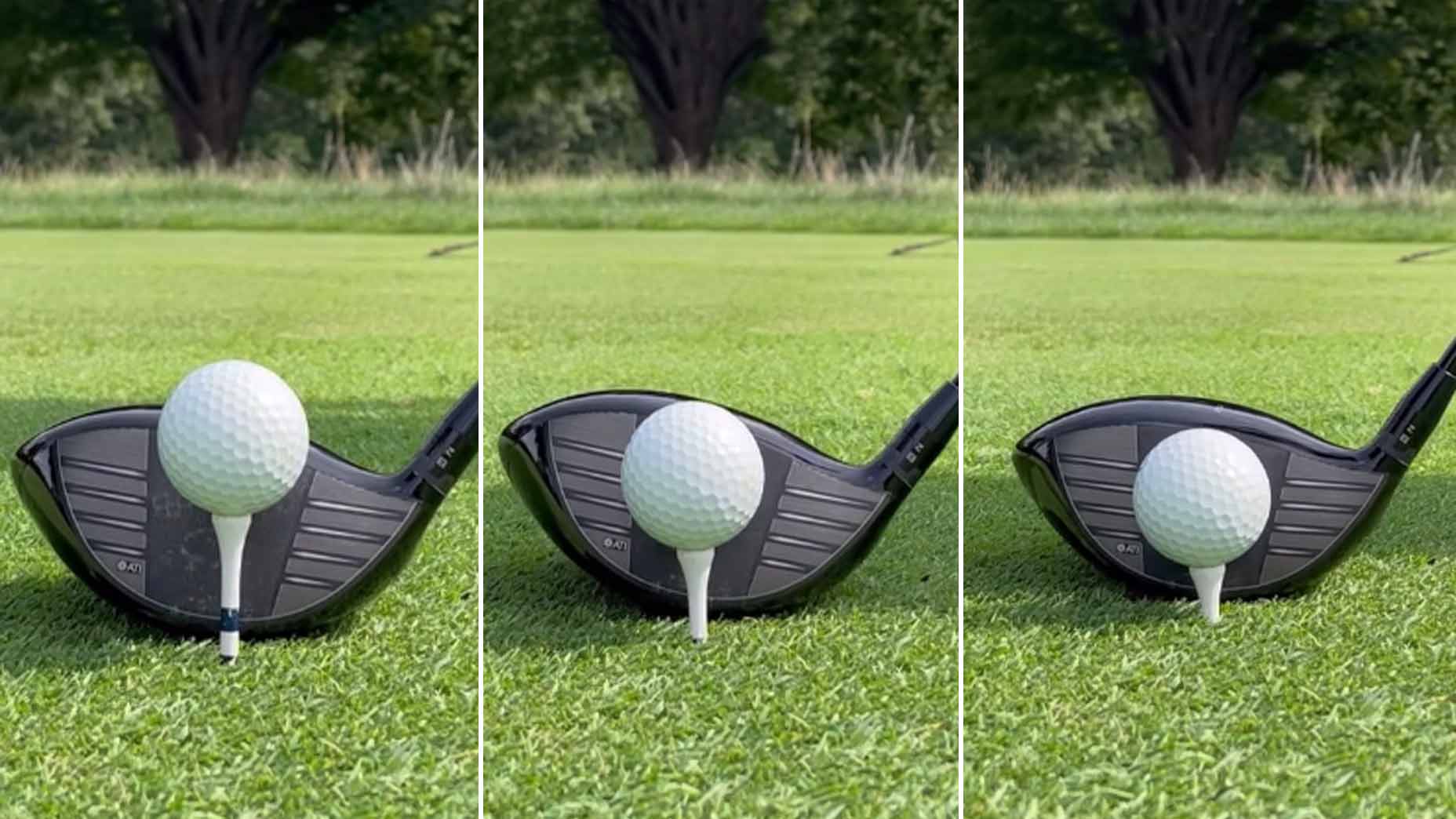Golf is all about consistency. The more consistent you get, the easier the game becomes — it’s as simple as that.
Making consistent swings is important, but before you take the club back, you need consistency, too. That means having a set-up that is not only fundamentally sound, but repeatable.
One of the simplest set-up areas to nail your consistency is off the tee. While swinging the driver might not always be easy, getting a consistent setup should be. That’s because you can control one variable with precision every time — and that variable is tee height.
Tee height might sound like a trivial variable, but it can have a huge impact on your contact. Check out the video below for a quick breakdown on tee height from GOLF Top 100 Teacher Trillium Rose.
The most important factor to consider when finding the optimal tee height is your attack angle. If you swing up on the ball (like you should with a driver), you can tee the ball high with little risk. If you’re trying to hit bombs, hitting up on the ball with a high tee height is a great way to go.
However, if you hit down on the ball with a negative attack angle, you need to tee the ball a little lower. Although it’s counterintuitive, a negative attack angle with the driver will produce more pop ups — and it can lead to making dummy marks on the crown of your club.
“For [these golfers], tee the ball lower and work on your angle of attack,” Rose says. “Alternatively, if you tend to hit up on it, you’re going to want a medium or higher tee height.”
There’s no one-size-fits-all solution when it comes to tee height, so do some experimenting on the range and see what works best for your swing.
